InvestNow News – 10th July – Legg Mason – The Diverging Fortunes of Emerging Markets
Article written by Alberto J. Boquin, Legg Mason – 29th June
This year’s COVID shock accelerated a secular decline in interest rates around the world. Emerging market (EM) rates are no exception. The yield on the JP Morgan Emerging Market Local Currency Index (GBI-EM) declined to a series low of 4.6% compared to a 6.3% average in the prior decade. However, looking at the index can be misleading as there is plenty of dispersion beneath the surface. Higher-quality EMs have seen their interest rates converge toward developed market levels, but there remains a posse of lower-quality EMs where equilibrium rates continue to hover around the high-single digits (Chart 1).

What differentiates the two groups? For starters, inflation-fighting credentials. It’s one thing to look at inflation in the present or even forecasts a year out. These are influenced by a number of temporary factors including the stage of the domestic business cycle, global oil markets, and currency passthrough inflation. A cleaner measure for inflation credibility is the willingness of markets to lend a country money for a nominal fixed rate at long maturities. Some EMs have weighted average maturities of their debt of over 10 years while some have been forced to borrow at much shorter terms. See Chart 2.

Fiscal policies matter too. A central bank’s ability to fight inflation is constrained by the sovereign’s ability to weather an economic slowdown and service its debt. If monetary policy is deemed unsustainable because of the impact it has on the fiscal outlook, then markets will move to price in a reversal of low policy rates. This is particularly prominent in today’s current market environment. While many EM central banks have moved rates to their effective lower bound and pledged to keep rates low as long as necessary, markets are pricing in hikes in a number of countries one year out (Chart 3).

Last but not least, some EMs have earned the benefit of the doubt due to the quality of their institutions. While it is always tempting to be charmed by a “rock star” finance minister or central bank governor, a country that relies on a single individual for credibility is a country whose fortunes can easily turn. Properly established institutions should garner respect regardless of the leadership.
The distinction between the good and bad EMs is likely to widen in coming years. As we move past the initial COVID shock, markets will likely move to further distinguish between EMs that will course correct to reverse emergency measures and those that just used the pandemic as an excuse for further fiscal and monetary slippage. Quite a few large EMs are stuck in the middle but are likely to head in one direction or another soon.
Groupthink is bad, especially at investment management firms. Brandywine Global therefore takes special care to ensure our corporate culture and investment processes support the articulation of diverse viewpoints. This blog is no different. The opinions expressed by our bloggers may sometimes challenge active positioning within one or more of our strategies. Each blogger represents one market view amongst many expressed at Brandywine Global. Although individual opinions will differ, our investment process and macro outlook will remain driven by a team approach.
InvestNow News – 10th July – Legg Mason – The Diverging Fortunes of Emerging Markets
Article written by Alberto J. Boquin, Legg Mason – 29th June
This year’s COVID shock accelerated a secular decline in interest rates around the world. Emerging market (EM) rates are no exception. The yield on the JP Morgan Emerging Market Local Currency Index (GBI-EM) declined to a series low of 4.6% compared to a 6.3% average in the prior decade. However, looking at the index can be misleading as there is plenty of dispersion beneath the surface. Higher-quality EMs have seen their interest rates converge toward developed market levels, but there remains a posse of lower-quality EMs where equilibrium rates continue to hover around the high-single digits (Chart 1).

What differentiates the two groups? For starters, inflation-fighting credentials. It’s one thing to look at inflation in the present or even forecasts a year out. These are influenced by a number of temporary factors including the stage of the domestic business cycle, global oil markets, and currency passthrough inflation. A cleaner measure for inflation credibility is the willingness of markets to lend a country money for a nominal fixed rate at long maturities. Some EMs have weighted average maturities of their debt of over 10 years while some have been forced to borrow at much shorter terms. See Chart 2.

Fiscal policies matter too. A central bank’s ability to fight inflation is constrained by the sovereign’s ability to weather an economic slowdown and service its debt. If monetary policy is deemed unsustainable because of the impact it has on the fiscal outlook, then markets will move to price in a reversal of low policy rates. This is particularly prominent in today’s current market environment. While many EM central banks have moved rates to their effective lower bound and pledged to keep rates low as long as necessary, markets are pricing in hikes in a number of countries one year out (Chart 3).

Last but not least, some EMs have earned the benefit of the doubt due to the quality of their institutions. While it is always tempting to be charmed by a “rock star” finance minister or central bank governor, a country that relies on a single individual for credibility is a country whose fortunes can easily turn. Properly established institutions should garner respect regardless of the leadership.
The distinction between the good and bad EMs is likely to widen in coming years. As we move past the initial COVID shock, markets will likely move to further distinguish between EMs that will course correct to reverse emergency measures and those that just used the pandemic as an excuse for further fiscal and monetary slippage. Quite a few large EMs are stuck in the middle but are likely to head in one direction or another soon.
Groupthink is bad, especially at investment management firms. Brandywine Global therefore takes special care to ensure our corporate culture and investment processes support the articulation of diverse viewpoints. This blog is no different. The opinions expressed by our bloggers may sometimes challenge active positioning within one or more of our strategies. Each blogger represents one market view amongst many expressed at Brandywine Global. Although individual opinions will differ, our investment process and macro outlook will remain driven by a team approach.



